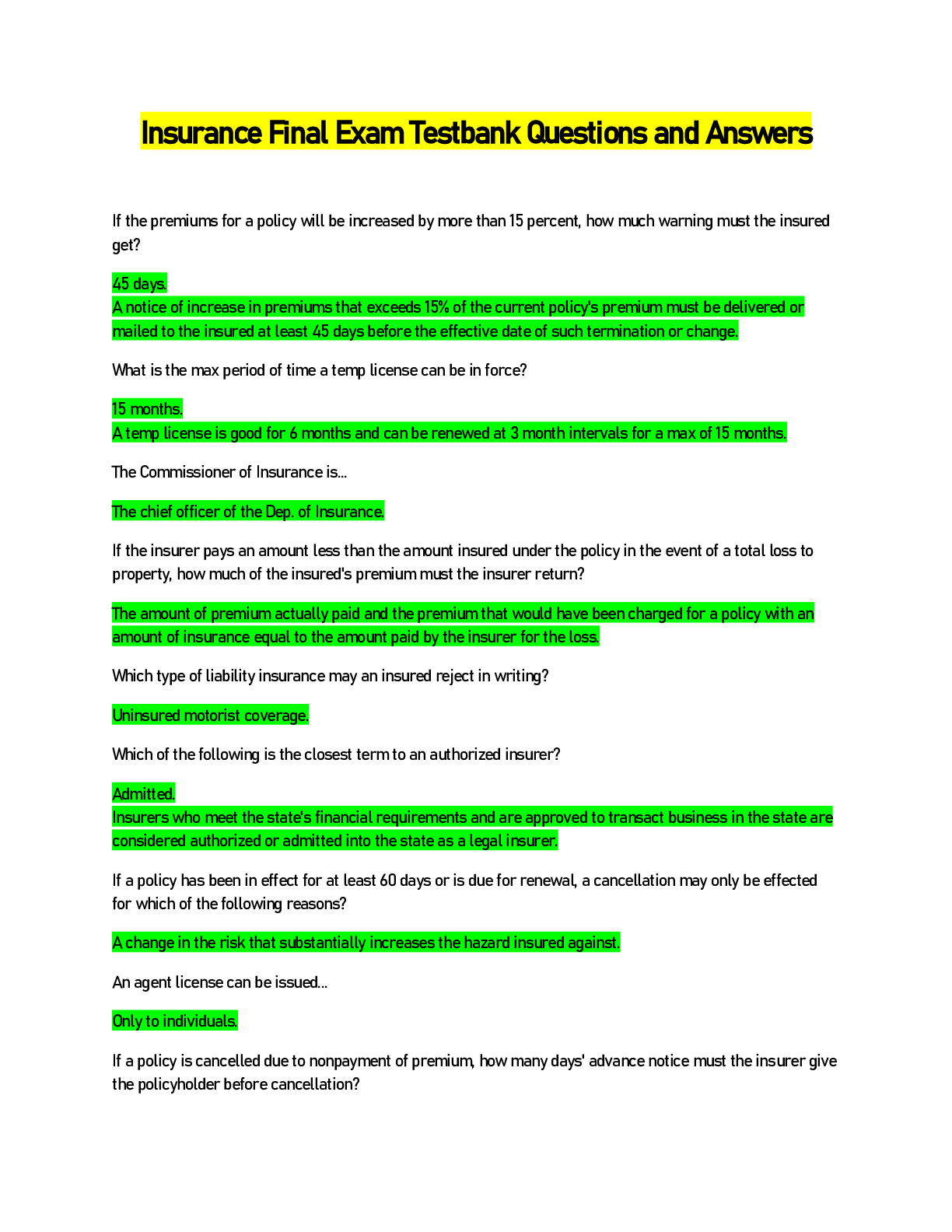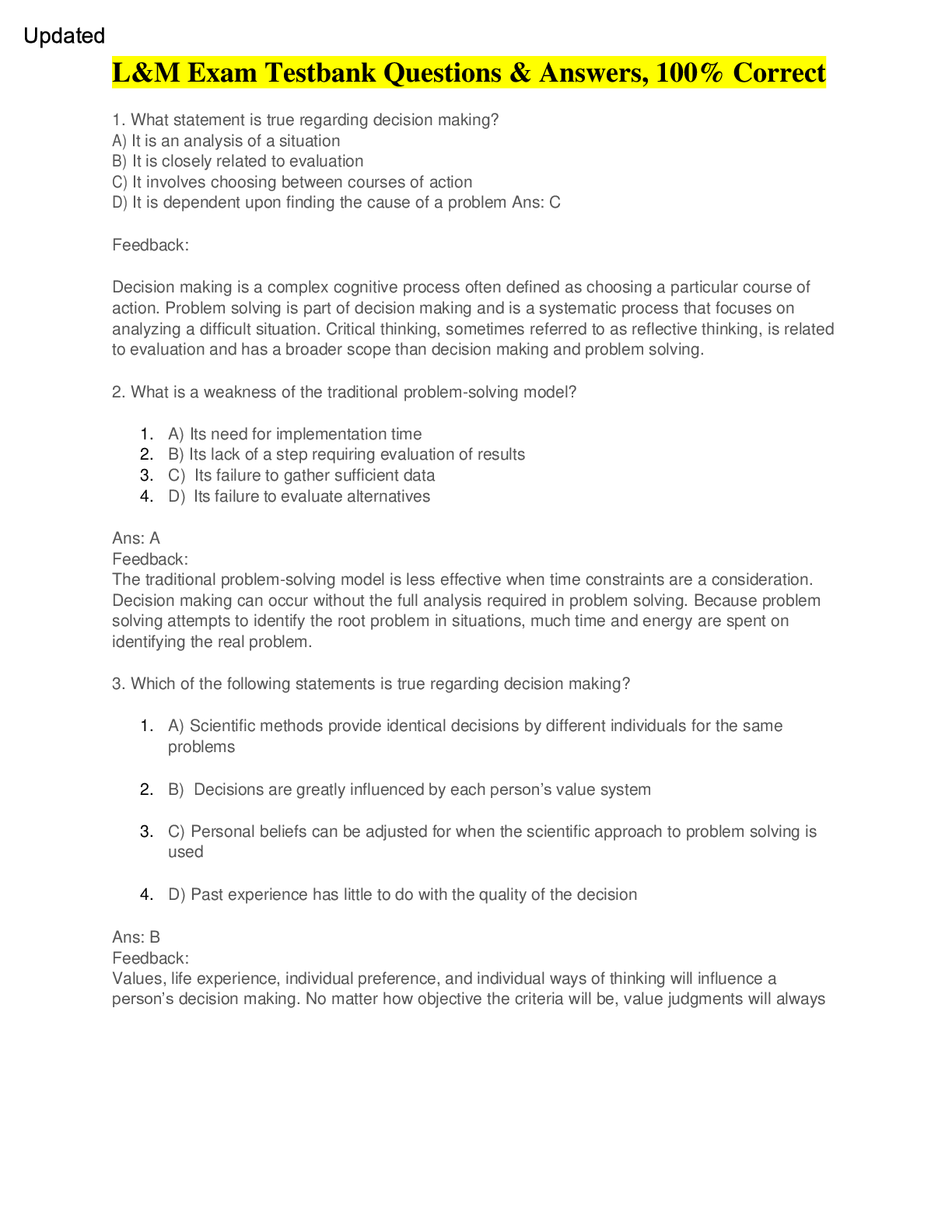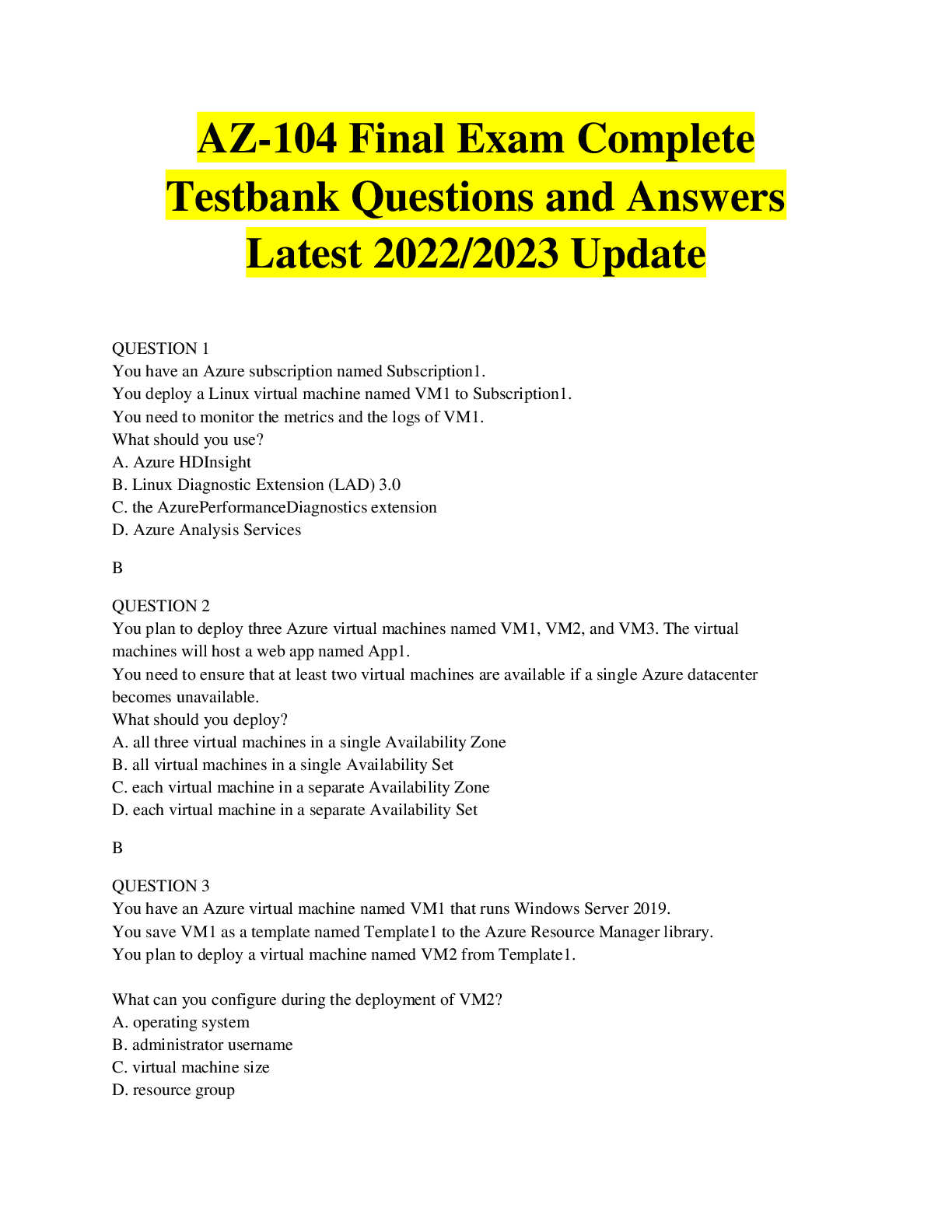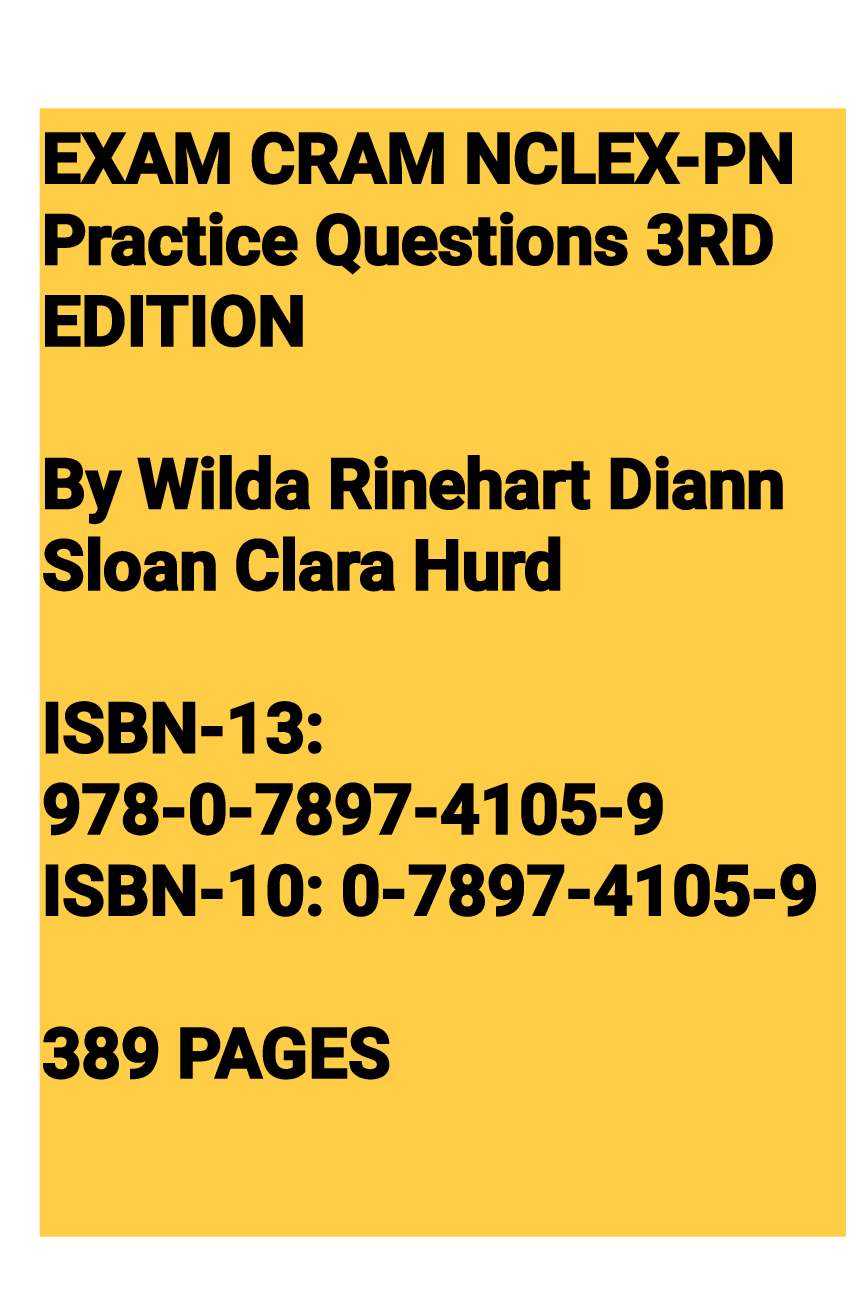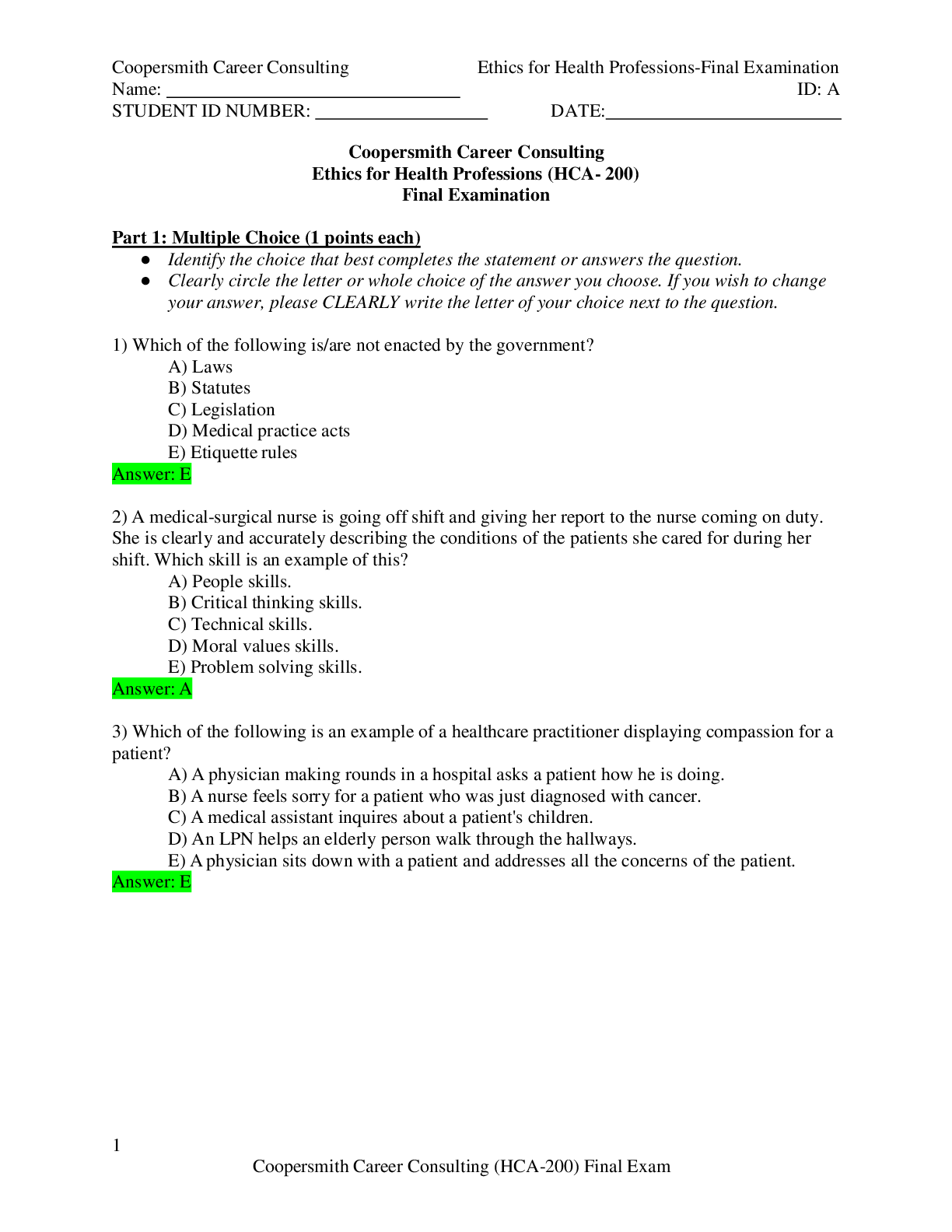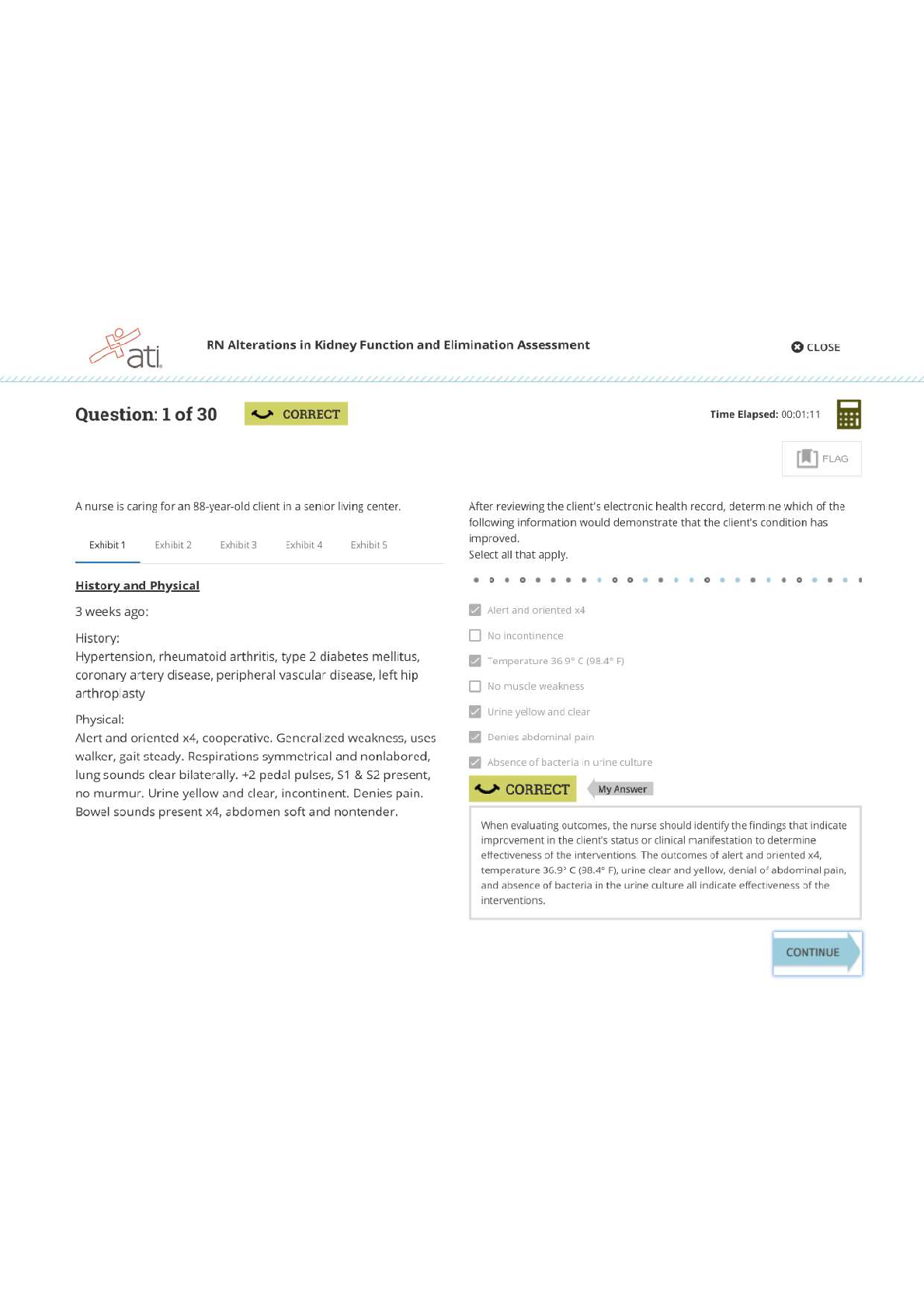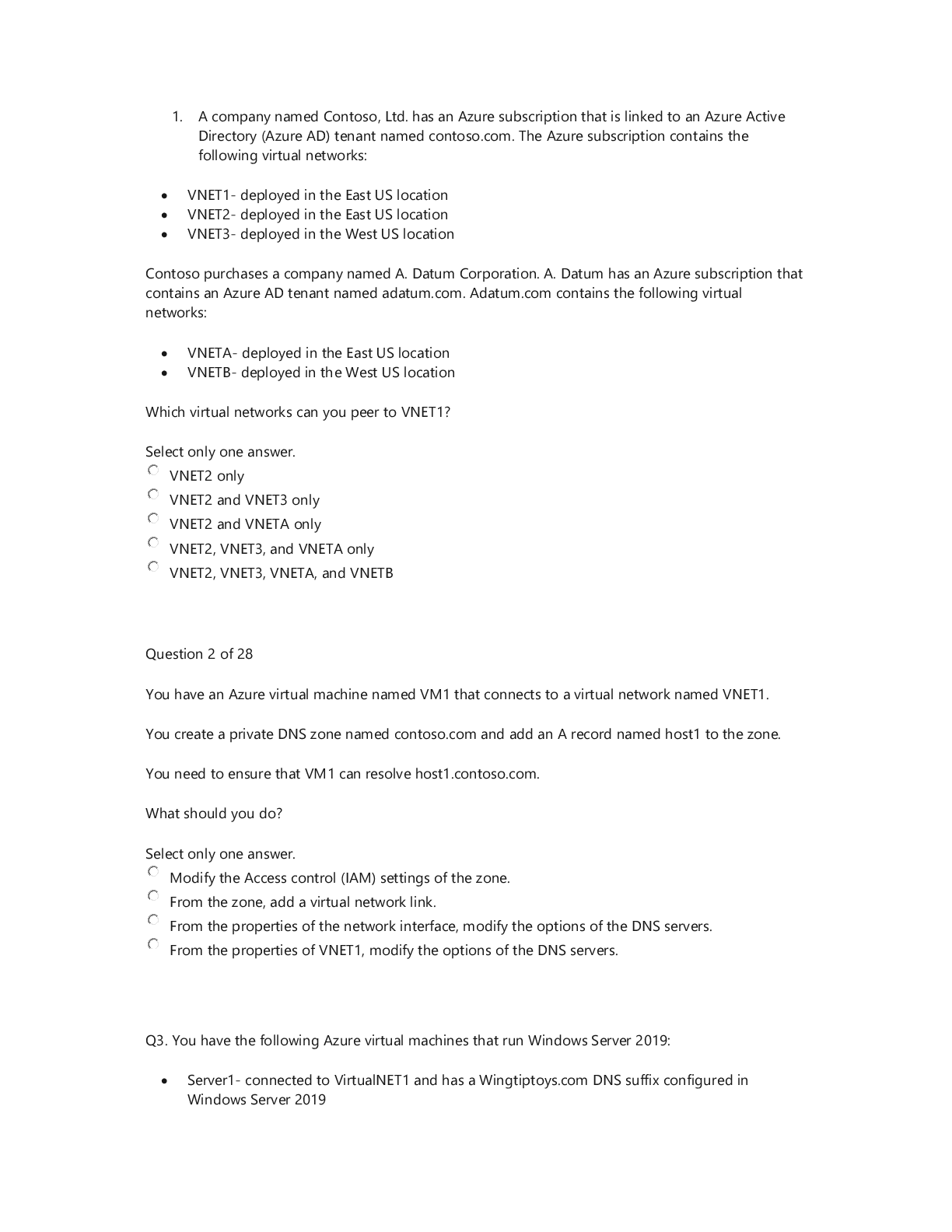*NURSING > EXAM > NR511 MIDTERM EXAM TESTBANK QUESTIONS & ANSWERS 2021, Graded>Chamberlain College of Nursing (All)
NR511 MIDTERM EXAM TESTBANK QUESTIONS & ANSWERS 2021, Graded>Chamberlain College of Nursing
Document Content and Description Below
NR511 MIDTERM EXAM TESTBANK QUESTIONS & ANSWERS 2021, Graded>Chamberlain College of Nursing-An adult has upper respiratory symptoms and cough for the past 14 days. What should be considered? (Pertussi... s) Pertussis should always be considered in adults who present with acute cough of greater than 5 days’ duration. The incubation period for pertussis is about 7-10 days. Patients present with URI symptoms for 1-2 weeks. The classic paroxysmal cough usually begins in the second week of the illness. The duration of symptoms and cough are about 3 months even when treated with antibiotics. This is highly infectious and is a reportable disease. Mycoplasma pneumoniae is: (a disease with extrapulmonary manifestations) Mycoplasma is an atypical pathogen and produces atypical pneumonia. It can be difficult to diagnose because symptoms can be varied and involve multiple body systems (extrapulmonary manifestations). Infection with Mycoplasma may present with a normal white blood cell count, maculopapular rash, GI symptoms, tender joints and aches, and, though rare, cardiac rhythm disturbances. Respiratory symptoms may not be pronounced. On chest X-ray there are some unique findings (peribronchial pattern) with Mycoplasma. These include thickened bronchial shadow, streaks of interstitial infiltration, and atelectasis. These are more likely to occur in the lower lobes. Which medication below is contraindicated in an asthma patient because it may increase risk of sudden death if used alone? (Long-acting bronchodilator) A long-acting bronchodilator can be used to treat asthma when it is used in combination with an inhaled steroid. Otherwise, using a long-acting bronchodilator like salmeterol is contraindicated. There is an increased risk of sudden death with asthma exacerbations when this class is used solo to treat asthma. The other choices can be used to treat asthma. Choices vary depending on the patient. A 75-year-old female with emphysema who has been treated with inhaled steroids for many years should: (should be screened for osteoporosis) Older females are at higher risk than others for osteoporosis. This female patient, who has used inhaled steroids and smokes, has multiple risk factors for osteoporosis. Additionally, she probably has emphysema because she smoked (or still smokes). If she is Asian or Caucasian, she has still another risk factor. Screening for osteoporosis should be considered when managing patients with multiple risk factors. A patient received the pneumonia immunization at age 60 years. He is 65 years old and presents to your clinic today. What recommendation should be made about the pneumococcal immunization? (He should receive another one today) This patient should receive another one today because he is 65 years old and at least 5 years has elapsed since his last one. The CDC does not recommend immunizing this patient every 5 years. Two immunizations are available, PCV13 and PPSV23. He needs both, but PCV13 should be administered today. PPSV23 should be administered at least 1 year later. Which of the following medications should be used cautiously in a patient who has asthma? (Timolol ophthalmic drops) Timolol is a beta blocker. This class of medications can precipitate bronchoconstriction in patients who have asthma. Even though timolol is being administered in the eye, it is absorbed through mucous membranes and can exert systemic effects. Beta blockers should be avoided in patients with asthma and used cautiously in patients with COPD. The other medications listed have no specific contraindications for patients with asthma. The most common symptom associated with acute bronchitis is: (Cough) Fever (temp > 101°F) is an unusual symptom associated with acute bronchitis. Cough is the most common symptom associated with acute bronchitis. Purulent sputum is identified in more than 50% of patients with acute bronchitis. The color imparted to the sputum is usually due to sloughing of epithelial cells, not bacterial infection. Concurrent upper respiratory symptoms are typical of acute bronchitis. Pharyngitis is common. Mild persistent asthma is characterized by: (symptoms occurring more than twice weekly) Mild persistent asthma is characterized by symptoms that occur more than twice weekly but not daily; or 3-4 nocturnal awakenings per month due to asthma. It is treated with an inhaled steroid daily, and a bronchodilator PRN for exacerbations. If symptoms occur more than twice weekly, therapy should be stepped up. Generally, a long-acting bronchodilator is added to the steroid when therapy is stepped up. The chest circumference of a 12 month-old is: (equal to head circumference) The chest circumference is not routinely measured at well-child visits, but is assessed if there is concern about the circumference of either the head or the chest. An exception to this observation can occur in premature infants where the head grows very rapidly. Normally, the head exceeds the chest circumference by 1-2 cm from birth until 6 months. Between 6 and 24 months the head and chest circumference should be about equal and by 2 years of age the chest should be larger than the head. The chest circumference is measured at the nipple line. A patient with cough and fever is found to have infiltrates on chest x-ray. What is his likely diagnosis? (Pneumonia) The finding of infiltrates on chest x-ray, in conjunction with clinical findings of fever and cough, should direct the examiner to consider pneumonia as the diagnosis. Other common clinical findings with pneumonia include chest pain, dyspnea, and sputum production. Though not common, some patients with pneumonia exhibit gastrointestinal symptoms like nausea, vomiting, and diarrhea. An uncommon symptom associated with acute bronchitis is: (temperature > 101°F) Fever is an unusual symptom associated with acute bronchitis. Cough is the most common symptom associated with acute bronchitis. Purulent sputum is identified in more than 50% of patients with acute bronchitis. The color imparted to the sputum is usually due to sloughing of epithelial cells, not bacterial infection. Concurrent upper respiratory symptoms are typical of acute bronchitis. Pharyngitis is common within the first 3 days of the illness. Patients who have cough-variant asthma: (all exhibit cough) One of the most common causes of cough in adults is asthma. Cough due to asthma is often accompanied by episodic wheezing or dyspnea, though some patients who have asthma only cough. This is termed “cough-variant asthma.” The clinical presentation of asthma varies but hyper-responsiveness of the airways is a typical finding. The most common cause of atypical pneumonia in adults is: (Mycoplasma pneumonia) In patients who have atypical pneumonia, Mycoplasma is the most common pathogen. M. pneumoniae is so named because of its atypical appearance on chest X-ray. This organism is responsible for “walking pneumonia” that is prevalent in a young adult population. This accounts for about 15% of pneumonia and is transmitted via respiratory droplet. Which patient might be expected to have the worst FEV1? (A 65-year-old with emphysema) FEV 1 stands for “forced expiratory volume in 1 second.” This is the volume of air that is forcefully exhaled in the first second of exhalation after a deep breath. Patients with emphysema are not able to do this efficiently because their alveoli are stretched, and mostly contain trapped air. FEV 1 is used to assess airway obstruction. An asthma patient in the green zone would be expected to have a normal (compared to himself) FEV1. An FEV1 measurement or pulmonary function tests would not be performed on a patient with pneumonia or bronchiectasis because he would have diminished respiratory capacity related to his infection. A patient who has asthma presents with chest tightness, wheezing, coughing, and fever. He has wheezing and diminished breath sounds in the upper right lobe. His cough is nonproductive, and he denies nasal symptoms. Which symptom is not likely related to his asthma? (Fever) Wheezing is typical of asthma, but one must consider pneumonia in any patient who presents with diminished breath sounds in only one lobe. Fever is not typical of asthma or an exacerbation. Ipratropium is very widely used in the treatment of COPD. Which of the following statements about ipratropium is correct? (It decreases parasympathetic tone and produces bronchodilation) Ipratropium is the most widely studied anticholinergic medication used to treat patients with COPD. It produces its helpful effects by reducing cholinergic tone in the lungs. It may be used with a beta agonist if shortness of breath is present. However, beta agonists increase side effects like tachycardia and tremor and do not improve efficacy. [Show More]
Last updated: 1 year ago
Preview 1 out of 74 pages
Reviews( 0 )
Document information
Connected school, study & course
About the document
Uploaded On
Jul 19, 2021
Number of pages
74
Written in
Additional information
This document has been written for:
Uploaded
Jul 19, 2021
Downloads
0
Views
43


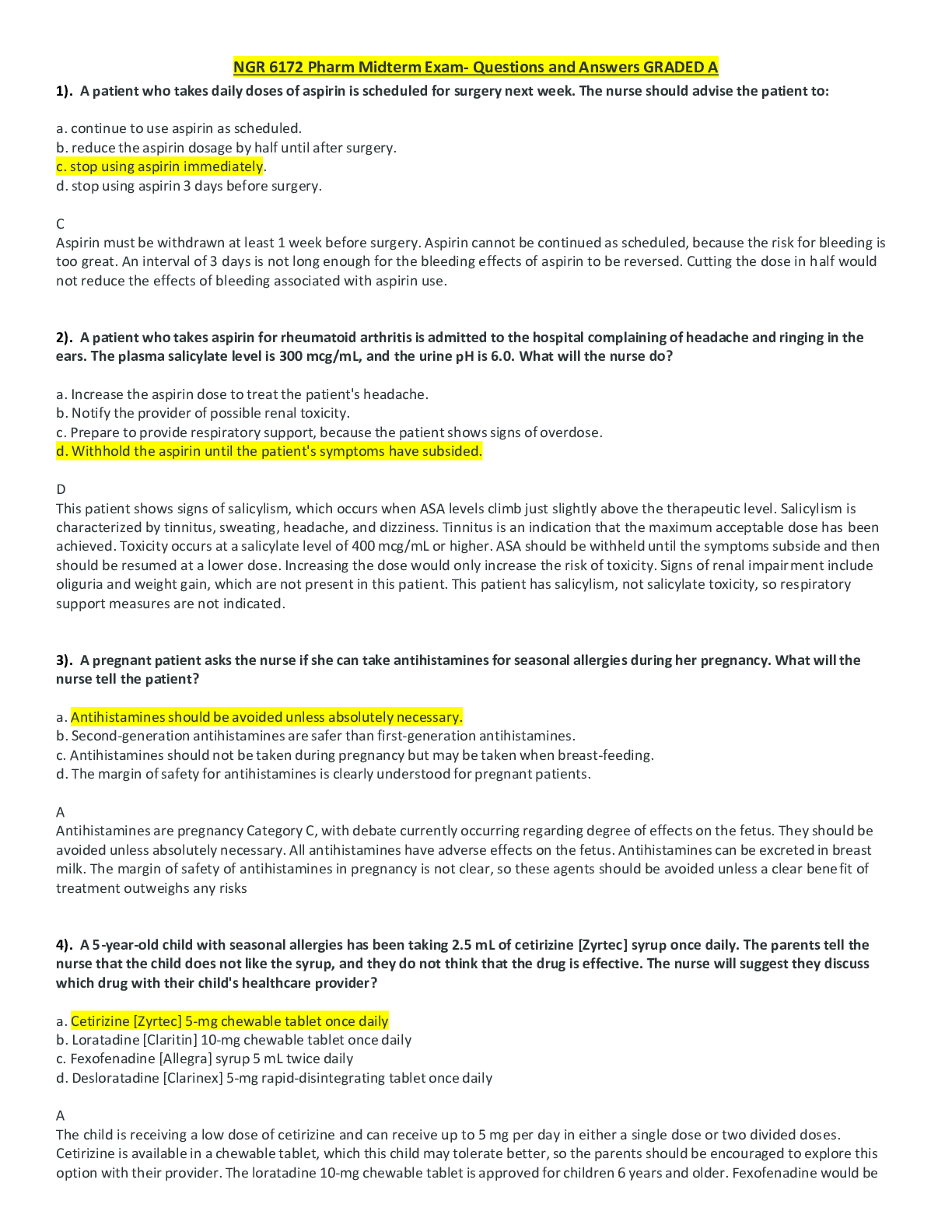

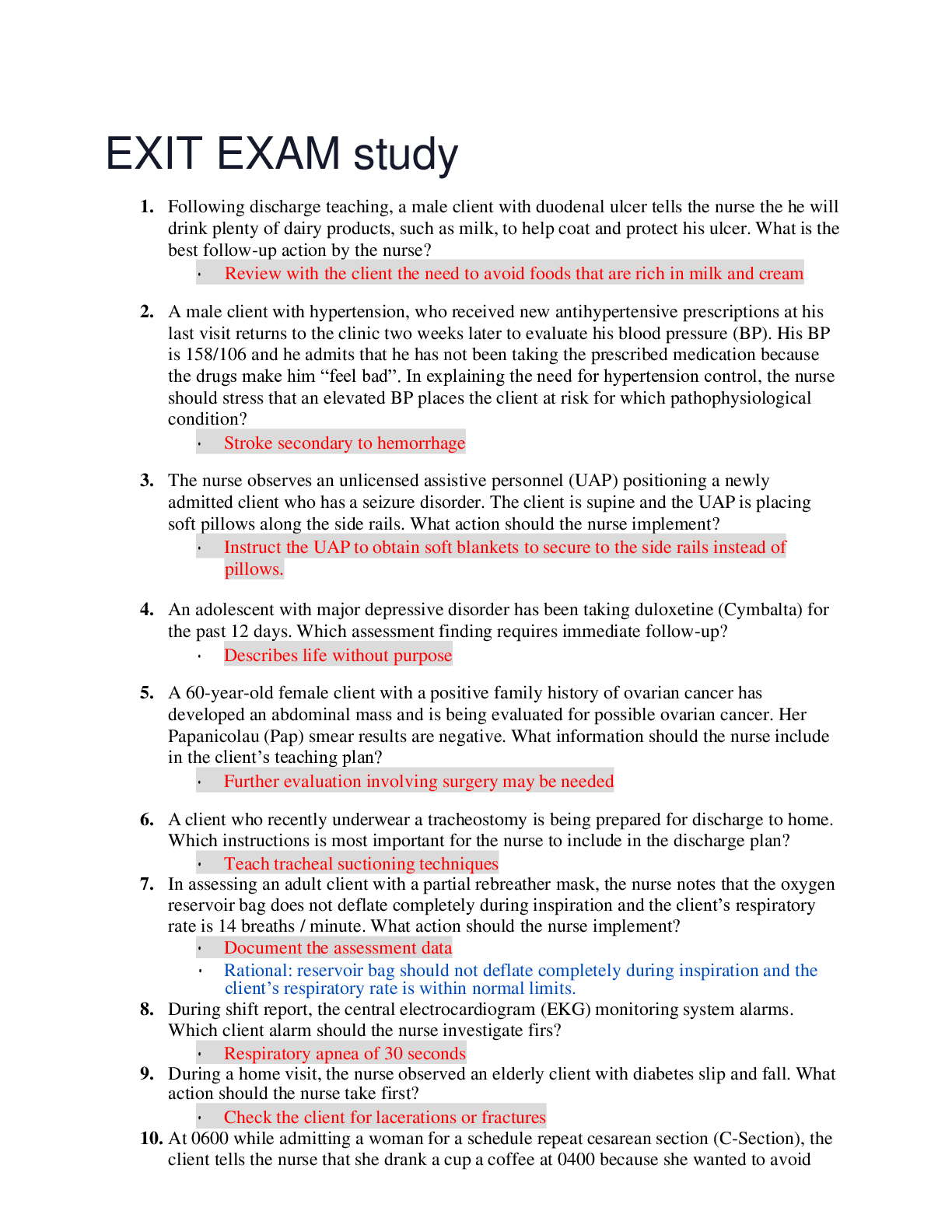
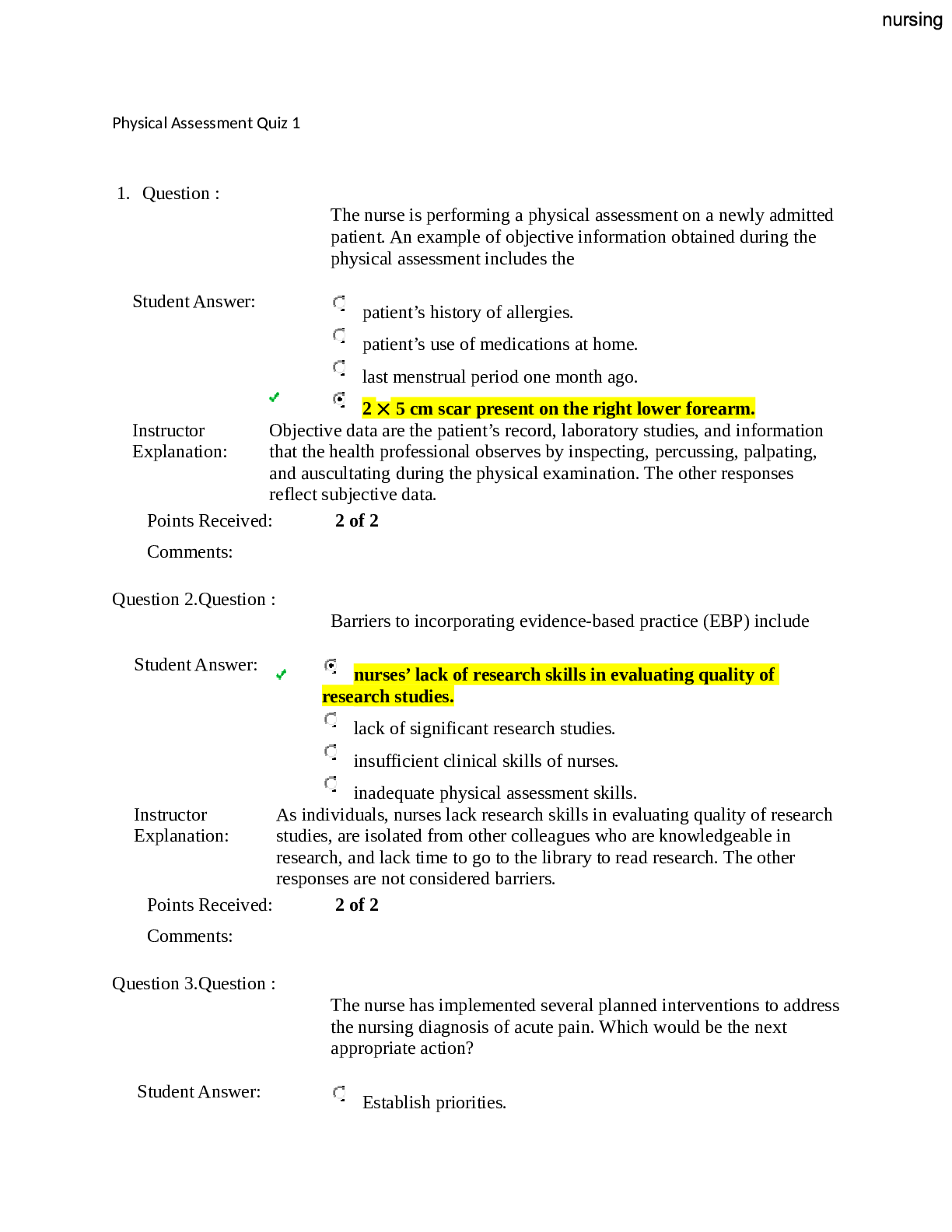
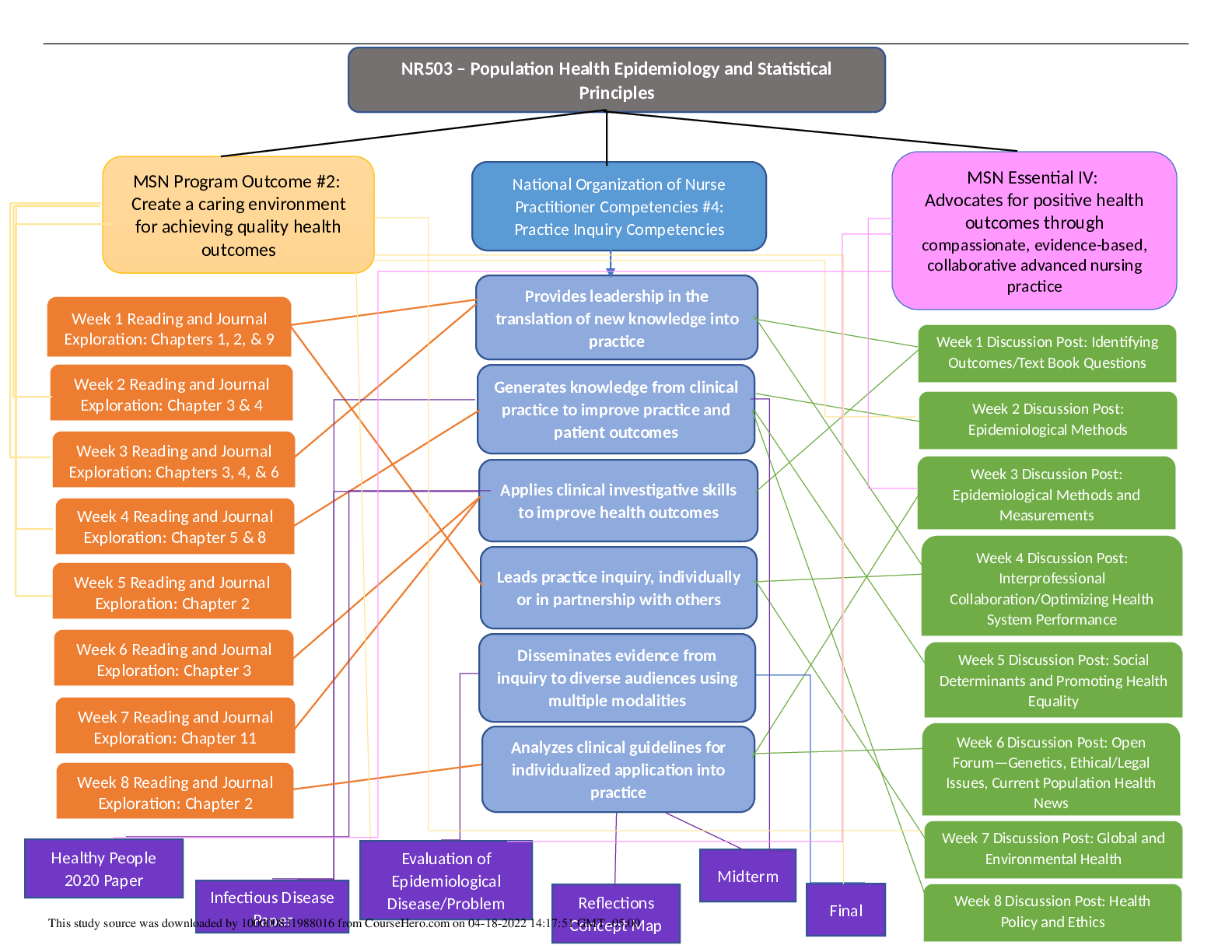

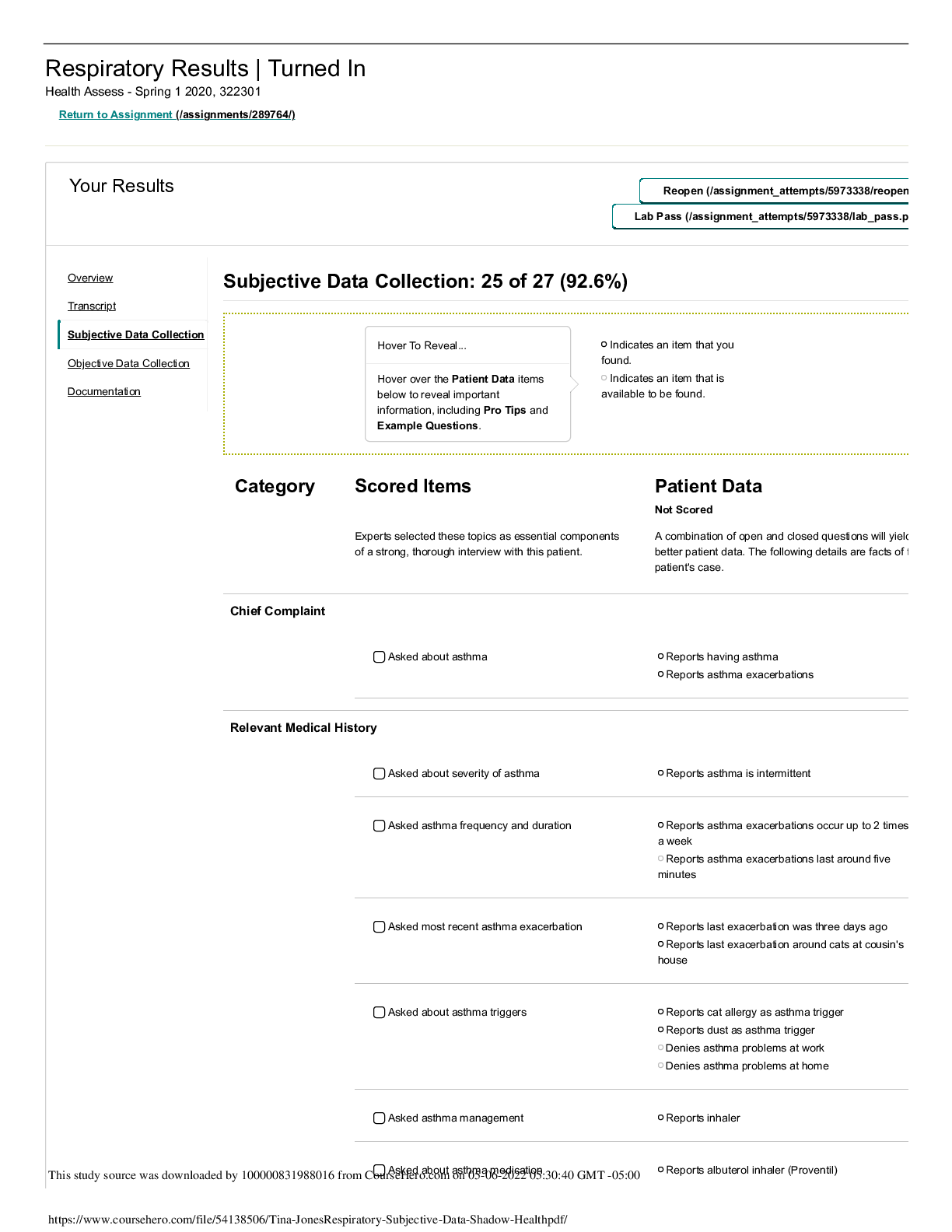
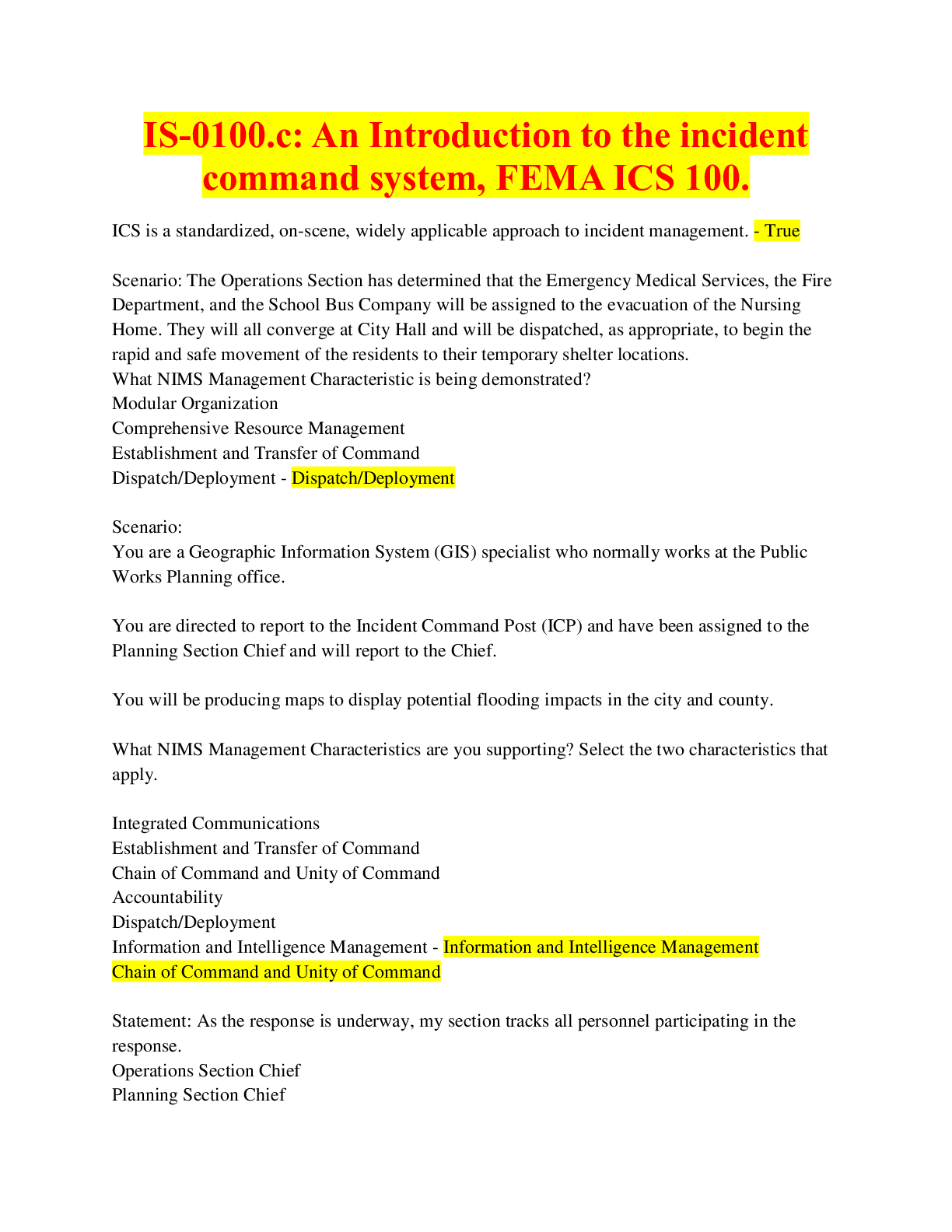

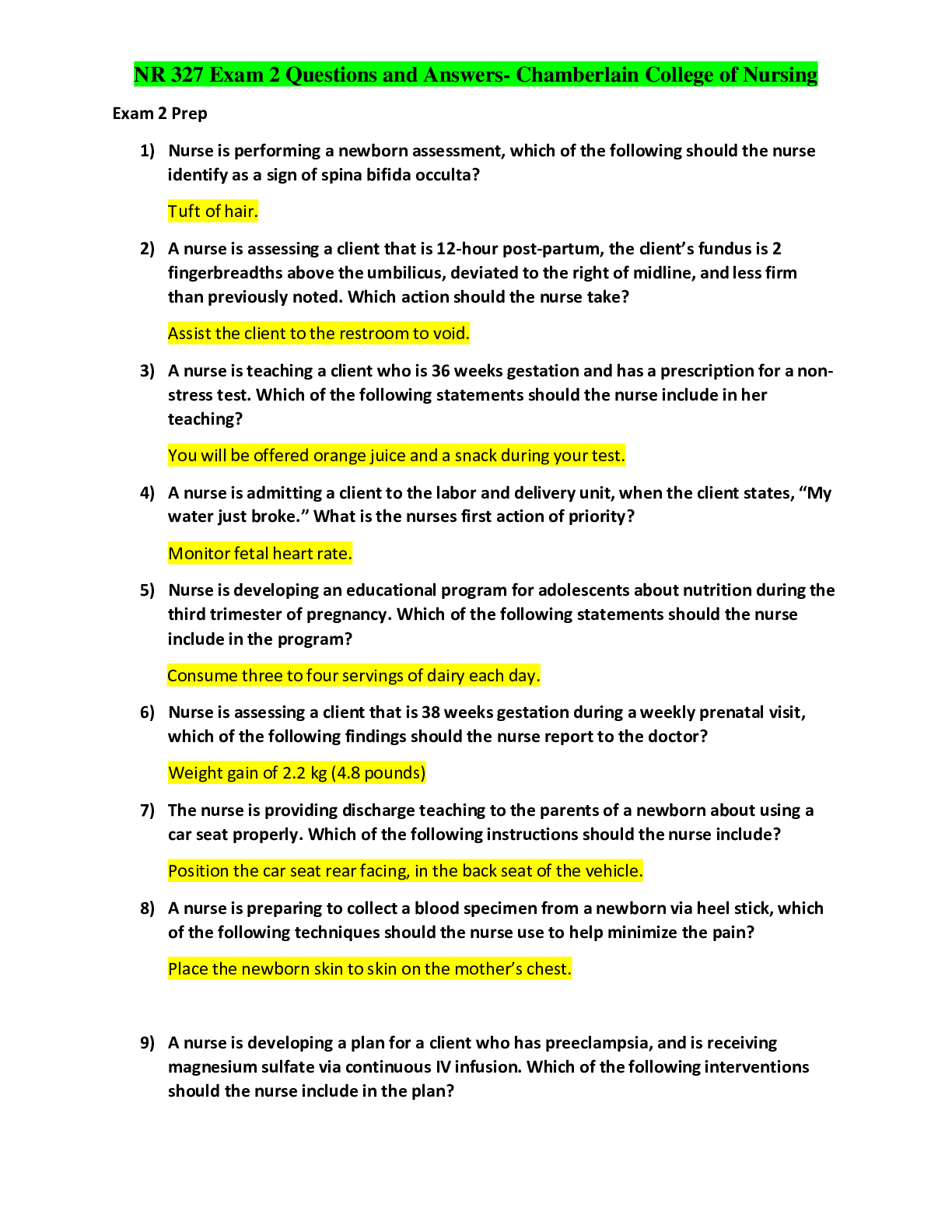

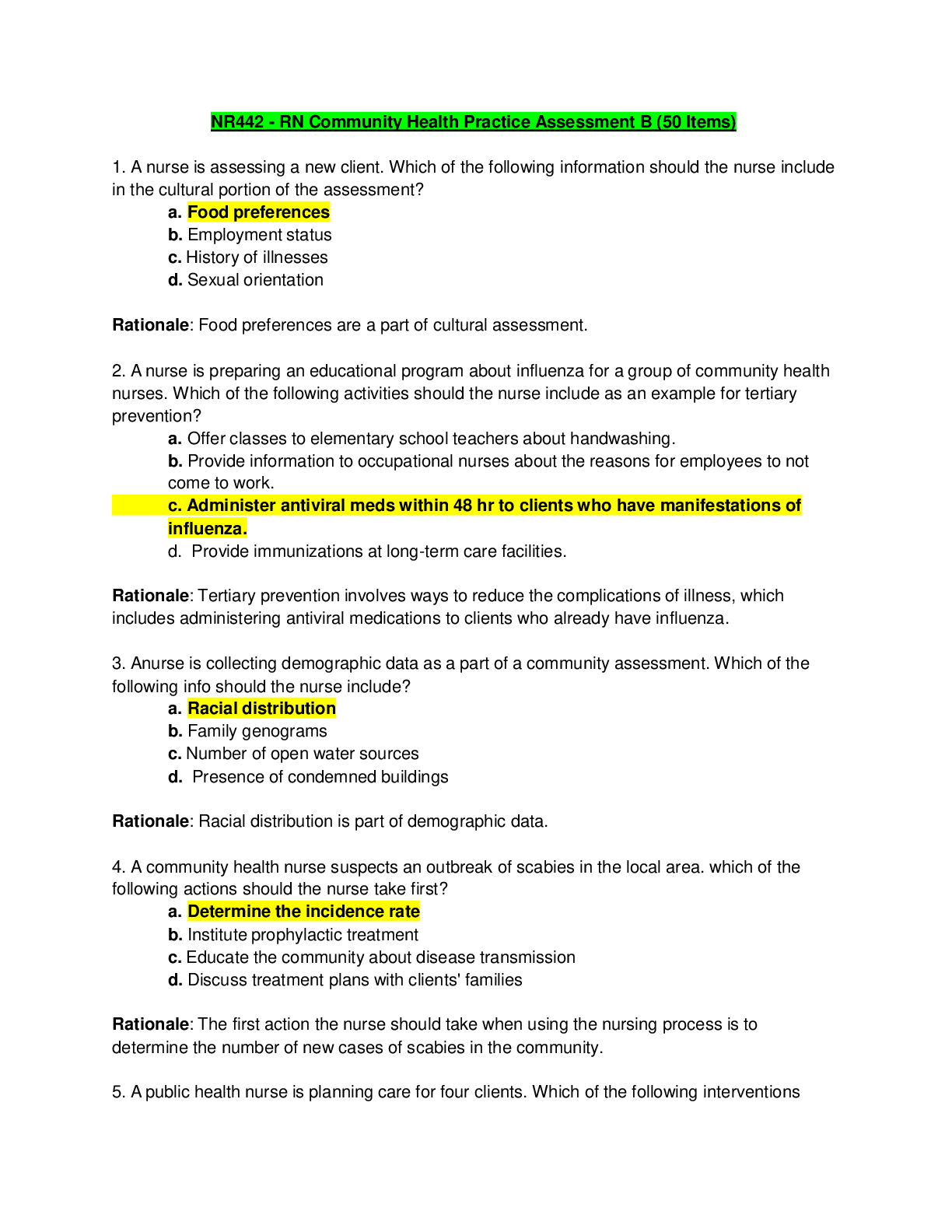


.png)

